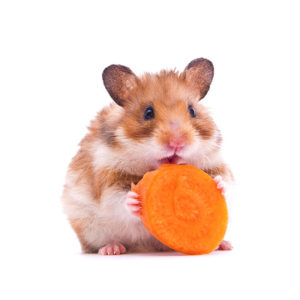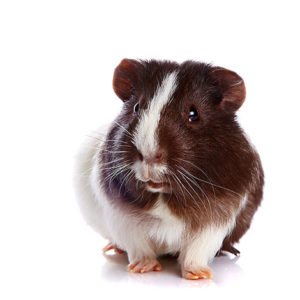Hamster Vs. Guinea Pig – Which Is The Better Pet For You?
Choosing a small pet is a big decision. Although their needs differ, hamsters and guinea pigs require equal amounts of planning. Where will the enclosure go? Is there enough space? Who is going to carry out the daily feeding and weekly cleaning? Can you afford all the equipment – and all the food the pets will nibble through?
Small mammals of the rodent and rabbit families may all look cute, fluffy and vaguely similar, but there are important differences in the needs and personalities of each species. There are two broad groups – animals that spend all their time indoors, such as hamsters; and those that spend part of their time outdoors and therefore need runs and tunnels, such as the guinea pig.

Hamster keeping – simple, but brief
There’s no doubt that hamsters suit people who want a pet that can pretty much look after itself. But it’s important to have some kind of interaction with your pet, otherwise there’s little point in having it in the house in the first place.
The defining feature of the hamster is its nocturnal lifestyle. This means hamster owners only get to interact with their furry friends in the evening, or early in the morning. Waking them up in the daytime will only make them confused and irritable.
These night-time habits mean that bedrooms are not the ideal location for a hamster cage. Busy little hamster feet, squeaky hamster wheels, rattling water bottles and gnawing rodent teeth are the kinds of sounds guaranteed to disturb a good night’s sleep. This is an important consideration for a child – if the hamster cage is not going to be in the bedroom, will it still be appreciated and looked after?
The answer might still be yes, if the kids are happy to interact with the hamster just before bedtime. The animals can be hand-tamed, and perhaps half an hour each day is exactly what the children are looking for. They can replenish the food and water each morning before school while the hamster settles in for another day’s deep sleep.
But if your kids want a pet who sticks around during the day, a hamster isn’t the best choice. With a lifespan of just two years, their pet won’t be around for very long, and children may feel they hardly had time to get to know their little friend.

Guinea pigs – garden lovers
Guinea pigs require lots more attention than hamsters, and that’s what a lot of pet owners are looking for. Getting to know a pet GP takes time, as they are nervous little creatures, but once you’ve gained their trust, you have a friend for life.
Children will have a real sense of being part of the animals’ community. There’s a lot to be done in GP upkeep, including replenishing hay – lots and lots of it – and chopping up veg for the food bowl. Hutches, runs and tunnels need weekly maintenance. If you have a good tunnel system such as the Zippi as part of your set up, the animals can freely move between their hutch and one or several runs or playpens at their own will. Watching the animals in action will give everyone hours of fun.
A guinea pig that is well taken care of can easily live for five to eight years, so it’s a long term commitment that shouldn’t be entered into lightly.
Guinea pigs are active in the day time, so their waking, eating and sleeping patterns match those of their human neighbours.
10 questions to decide: Hamster or Guinea Pig?
Still undecided? Answer the following questions, and then total up your score, H vs. GP. The higher number reveals the ideal pet choice for you!
1. Is someone around during the day to look after the pets?
Yes – score 1 GP
No – score 1 H
2. Is the pet for a child?
Yes – score 2 GPs
No – score 1 H and 1 GP
3. Do you have some space in the garden for an enclosure or run?
Yes – score 1 GP
No – score 1 H
4. Does anyone in the household have a pet allergy? (This may mean keeping the pets outdoors)
Yes – score 2 GPs
No – Score 1 GP and 1 H
5. Do you want to keep just one pet?
Yes – score 1 H
No – score 1 GP
6. Is someone prepared to prepare fresh veg each day for the pet?
Yes – score 1 GP
No – score 1 H
7. Do you only have room for a small cage?
Yes – score 2 Hs
No – score 1 H and 1 GP
8. Is the pet owner ‘late to bed, late to rise’?
Yes – score 2 Hs
No – score 1 GP and 1 H
9. Is the cage within earshot of your bedroom?
Yes – score 2 GPs
No score 1 H and 1 GP
10. Are you looking for a pet as a long-term companion?
Yes – score 1 GP
No – score 1 H
More GPs than Hs, or the other way round? Either way, you will hopefully now have a firmer idea of which pet will best suit you and your household.
No comments yet - Leave a comment
This entry was posted in Guinea Pigs on March 27th, 2020 by linnearask